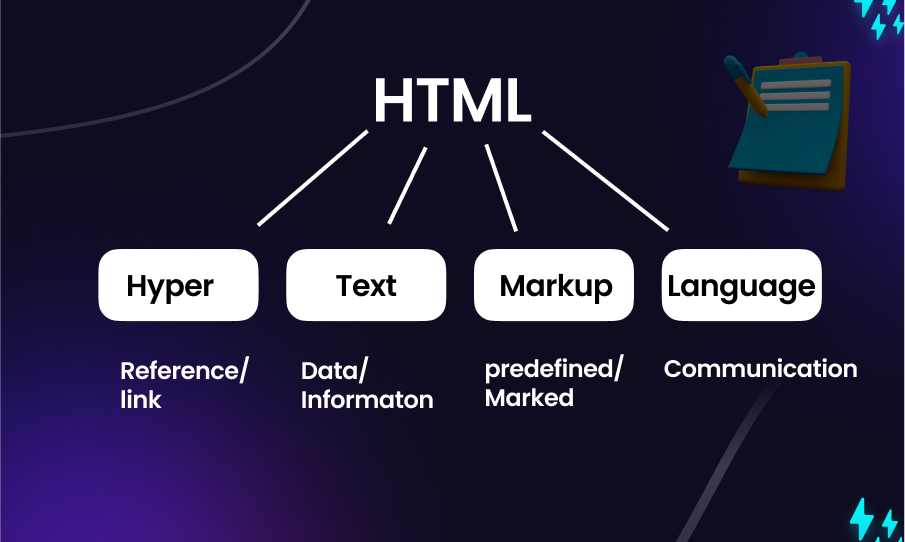
Understanding HTML: The Language of the Web
HTML, or Hypertext Markup Language, is the backbone of the World Wide Web. It’s a markup language used to structure and present content on the internet. Whether you’re a seasoned web developer or just starting your journey in web design, HTML is a fundamental skill you must grasp. In this blog post, we’ll explore what HTML is, its basic components, and its importance in the web development world.
What is HTML?
HTML is a markup language that stands for “Hypertext Markup Language.” It is not a programming language; instead, it’s a way to structure the content of web pages. HTML uses a system of elements and tags to define how the content should be displayed in a web browser.
Here’s a simple HTML structure to give you an idea:
<!DOCTYPE html>
<html>
<head>
<title>My First HTML Page</title>
</head>
<body>
<h1>Welcome to Zarq solution</h1>
<p>This is a Digital Marketing Agency</p>
</body>
</html>
The output is

In this example, we have an HTML document with a basic structure. Let’s break down the key components:
<!DOCTYPE html>: This declaration specifies the document type and version of HTML used.<html>: The root element that encloses the entire HTML document.<head>: Contains metadata about the document, such as the title that appears in the browser tab.<title>: Sets the title of the web page, which is displayed in the browser’s title bar or tab.<body>: This is where the main content of the web page is placed.<h1>and<p>: These are elements for headings and paragraphs, respectively. They define the structure and content of the page.
How HTML Works
HTML uses a series of tags, enclosed in angle brackets (< >), to define different elements on a web page. These tags create a hierarchical structure that tells web browsers how to display the content. For example, <h1> tags indicate a top-level heading, while <p> tags indicate a paragraph of text.
Attributes can be added to HTML elements to provide additional information about them. For instance, the href attribute in an <a> tag specifies the URL of a link, and the src attribute in an <img> tag specifies the image source.
The Importance of HTML
HTML is the foundation of web development. Without it, the web as we know it wouldn’t exist. Here are some key reasons why HTML is essential:
Universal Language: HTML is supported by all web browsers and is platform-independent, ensuring consistent rendering of web pages across different devices.
Accessibility: HTML allows developers to create web content that is accessible to people with disabilities, ensuring a more inclusive web.
SEO-Friendly: Properly structured HTML can improve a website’s search engine optimization (SEO) by making it easier for search engines to understand and index the content.
Versatility: HTML is not limited to text. It can incorporate multimedia, forms, and interactive elements, making it a versatile language for web development.
Foundation for CSS and JavaScript: HTML works in conjunction with CSS (Cascading Style Sheets) and JavaScript to create visually appealing and interactive web experiences.
In summary, HTML is the cornerstone of the internet. It defines the structure and content of web pages, making it possible for us to browse, interact, and share information online. Understanding HTML is a crucial first step for anyone aspiring to become a web developer or anyone interested in creating and maintaining a presence on the web. So, if you’re looking to embark on a web development journey, start with HTML, and you’ll be well on your way to creating amazing web experiences.
We hope this blog post has given you a better understanding of HTML and its significance in web development. If you’re interested in learning more, there are countless tutorials and resources available to help you dive deeper into the world of HTML.
Lorem ipsum dolor sit amet, consectetur adipiscing elit. Ut elit tellus, luctus nec ullamcorper mattis, pulvinar dapibus leo.


